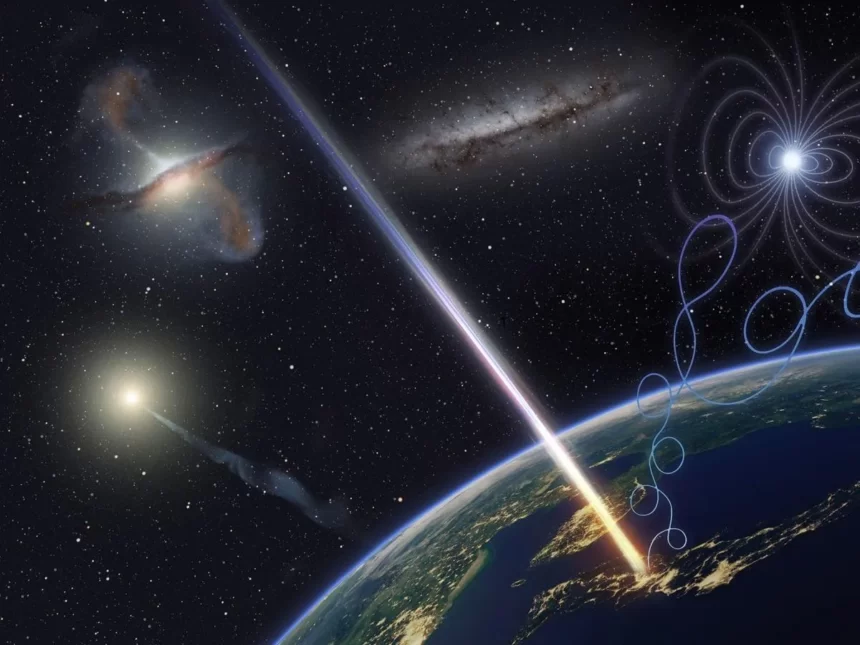In a remarkable feat of scientific discovery, scientists have detected an extraordinary cosmic ray, dubbed the Amaterasu particle, with an energy level that dwarfs even the most powerful particle accelerators on Earth. Named after the Japanese sun goddess, this ultra-high-energy cosmic ray (UHECR) is believed to have originated from the depths of the cosmos, traveling for billions of years before reaching our planet.
The Elusive Nature of UHECRs
Cosmic rays, enigmatic messengers from the vast expanse of space, constantly bombard Earth from all directions. These particles, primarily composed of the nuclei of atoms, travel at speeds approaching the speed of light. While most cosmic rays possess relatively low energy levels, a rare subset, known as ultra-high-energy cosmic rays (UHECRs), carries energies millions or even billions of times greater than those of ordinary cosmic rays.
UHECRs are exceptionally rare and challenging to detect. Their extreme energies and rarity have long baffled scientists, as their origins remain shrouded in mystery. The prevailing hypothesis suggests that UHECRs must originate from extremely distant galaxies, far beyond the confines of the Milky Way. However, the immense distances involved raise questions about how these particles can maintain their extraordinary energies during their protracted journeys across the cosmos.
The Discovery of the Amaterasu Particle
In a groundbreaking discovery, the existence of the Amaterasu particle was revealed on July 25, 2019, by the Telescope Array, a colossal experiment located in Utah, USA. The Telescope Array, a network of detectors spread across an area of approximately 500 square kilometers, is specifically designed to capture these elusive UHECRs.
An Energy Level that Shatters Records
With an energy level of 1.9 x 10^20 electron volts (eV), the Amaterasu particle surpasses even the record-breaking “Oh-My-God” particle observed in 1991. This immense energy, approximately 100 million times greater than the energy level of protons in the Large Hadron Collider, suggests that the particle originated from an exceptionally powerful event in the cosmos.
Implications for Cosmic Ray Research
The detection of the Amaterasu particle marks a significant milestone in cosmic ray research. It provides compelling evidence for the existence of UHECRs in the universe and offers a tantalizing glimpse into the most violent events that occur in the cosmos. By studying these particles, scientists aim to unravel the mysteries of their origins, gain insights into the extreme conditions in distant galaxies, and shed light on the fundamental nature of matter and energy.
Future Directions of UHECR Exploration
To delve deeper into the enigma of UHECRs, scientists are embarking on the development of next-generation detectors with enhanced capabilities. These instruments, designed to capture and analyze UHECRs with unprecedented precision, hold the potential to unravel the exact sources of these particles and provide a window into the most energetic processes in the universe.
The Amaterasu Particle: A Beacon of Cosmic Mysteries
The Amaterasu particle stands as a testament to the vastness and complexity of the universe, reminding us of the immense energy sources and unfathomable distances that exist beyond our galaxy. As scientists continue to push the boundaries of knowledge, the Amaterasu particle serves as a beacon, guiding us towards a deeper understanding of the universe’s most enigmatic phenomena.










